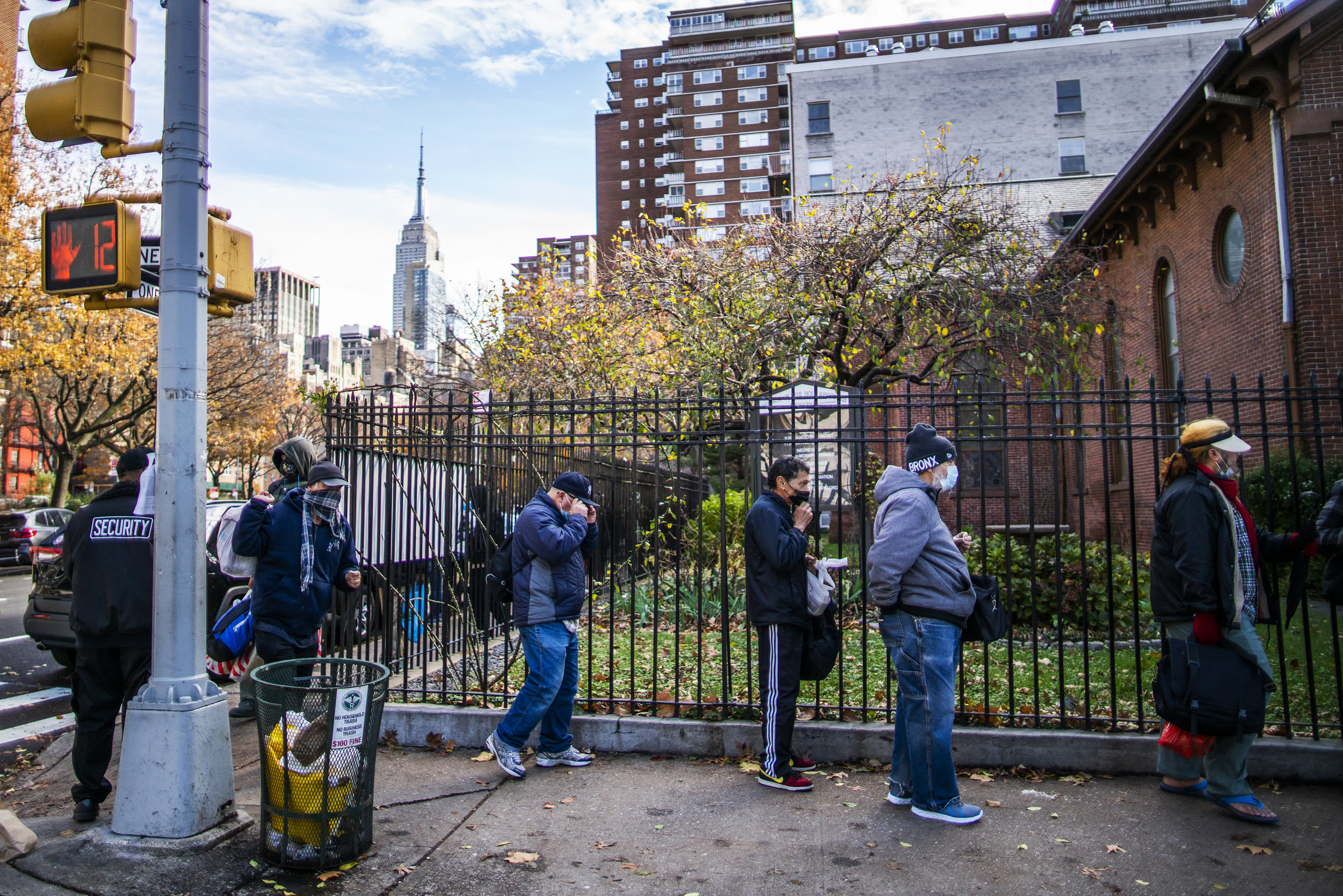Without more jobless benefits, almost 5 million people will fall into poverty, including 1.3 million kids

People queue to get food donated by local organizations on Nov. 23, 2020 in New York.
Eduardo MunozAlvarez/VIEWpress/Corbis via Getty Images
1.3 million kids
Absent intervention, those programs will end the last weekend in December, shutting off income for these workers.
If that happens, 4.8 million Americans will fall below the poverty threshold, according to Megan Curran and Zachary Parolin, researchers at Columbia’s Center on Poverty and Social Policy.
“That’s not a tiny increase or decrease,” Curran said. “That’s a noticeable jump.
“And you’re seeing it as a direct result of losing some of these critical policy pieces that have been in place.”
About 1.3 million individuals — more than 1 in 4 — are children, Curran said.
“The folks who lost their jobs are living in families, and the loss of income they’d face here affects everyone in the household,” she said.
A family of four is below the poverty line if they make less than about $28,000 a year, or $2,300 a month, according to the measure used by Columbia researchers.
Such families don’t have enough money to afford basic needs like food, rent and clothing, Curran said.
They’re also at risk of taking on debt to cover costs, losing their apartments or homes to eviction and foreclosure, and their cars to repossession — all of which will make it harder for the economy to rebound from its pandemic depths, she added.
Drivers line up for a pop-up grocery event in Mankato, Minnesota, on July 23.
Ben Brewer/Bloomberg via Getty Images
Spike in poverty since summer
The CARES Act blunted what would have otherwise been the worst rise in poverty in 50 years, Curran said.
The law offered aid like $1,200 stimulus checks and extra unemployment benefits, including a $600 boost to weekly benefits that lasted through July, leading poverty rates to fall in the initial months of the pandemic.
But that assistance has either run dry or will soon do so, and poverty has spiked as a result.
Nearly 8 million people joined the ranks of the poor between June and November, according to a separate paper published Tuesday by researchers at the University of Chicago, University of Notre Dame and Zhejiang University.
That’s not a tiny increase or decrease. That’s a noticeable jump.
Megan Curran
researcher at Columbia University’s Center on Poverty and Social Policy
Poverty rates grew in each month over that time period — even though the unemployment rate has fallen by 40%, according to the paper. The national unemployment rate was 6.7% in November.
Black Americans, children and those with a high-school education or less were among the most affected groups, according to the paper. Poverty was also most pronounced in states with less effective unemployment systems.
However, millions of individuals could fall out of poverty if Congress is able to pass additional Covid relief.
If expiring unemployment programs are extended into 2021 and coupled with a $300 weekly supplement to benefits — a scenario around which lawmakers appear to be coalescing — there would be 7.6 million fewer impoverished individuals, according to the Columbia paper. That includes just over 2 million children.
Lawmakers are getting close to a $900 billion deal and could announce it as soon as Wednesday.




